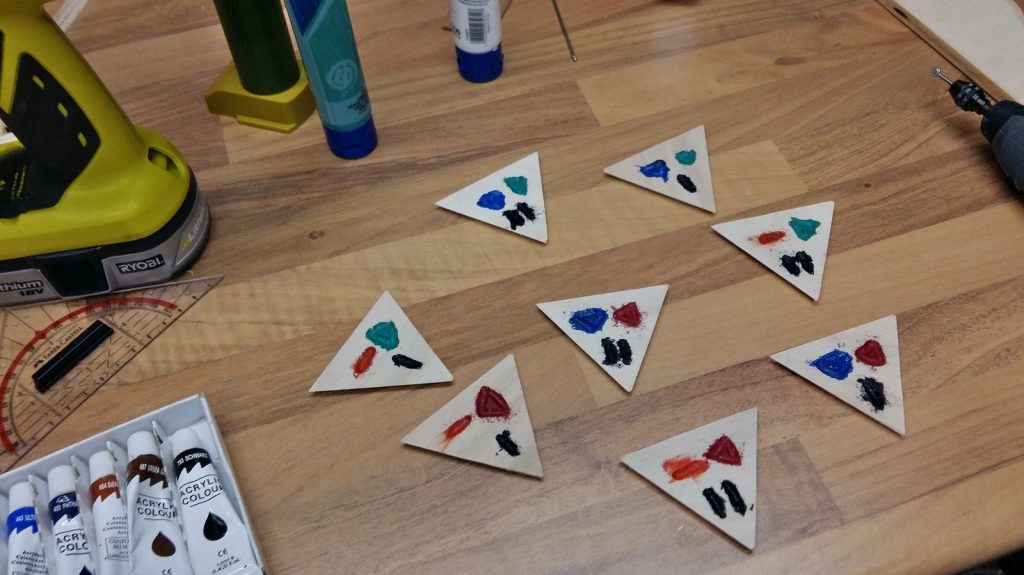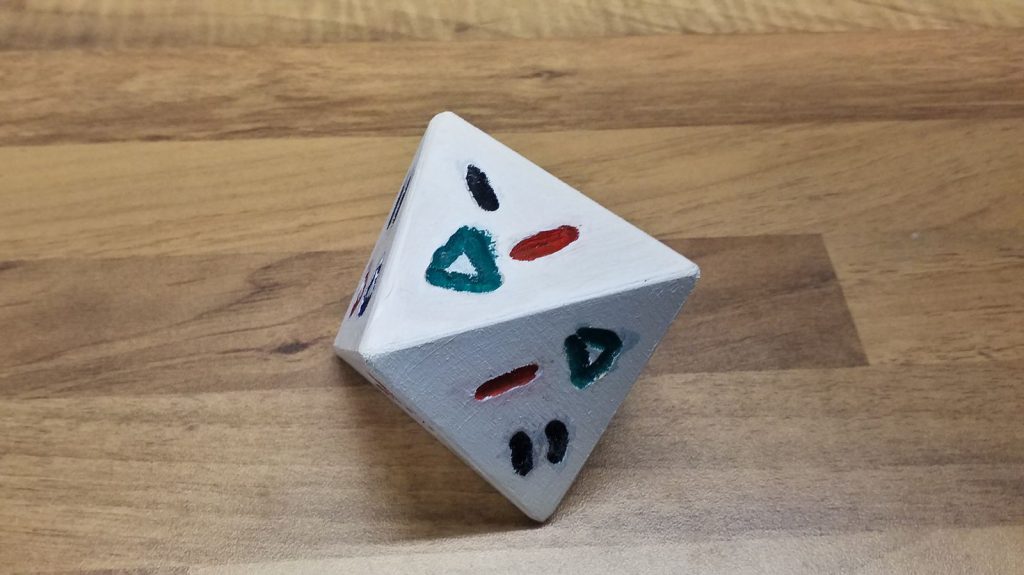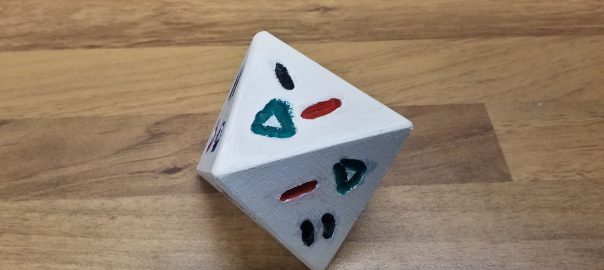The operation session which a good friend of mine and I are planning is approaching. It’s going to be a premiere in more than one aspect: we haven’t done joint operations for a long time; it’s also been a long time since we did some shunting; and we’re going to try and let children participate.
So the question stands: How can we combine interesting operations with as few rules as possible and as little preparations as possible? Enter *drumroll* the shunting dice.
While rummaging Rik’s Weblog I stumbled across a post dealing with managing freight on the railway. Rik utilizes a self-made database program which generates trains using a random number generator. That made me think: there’s another type of random generator, namely dice. It’s an easy principle: each time when one is approaching a train station, one throws the dice. It will tell wether to connect or disconnect waggons. It might also point out wether one or – say – two waggons are to be handled. And finally, which end of the train is about to gain or lose waggons. One can either fulfil the task – or one cannot, for instance because the station doesn’t hold enough waggons to connect. In the latter case the train simply proceeds to the next station. So it comes down to 2³ options. 2 x 2 x 2 = 8 possible dice throws require a D8, AKA an Octahedron.

Sounds easy, doesn’t it? One simply cuts eight equilateral triangles, chamfers them 30° each, glues them togehter… wait a minute, it won’t fit. Of course, an octahedron consists of two pyramides and a pyramide naturally has got right angles at its base. So it’s going to be 45° chamfer… won’t fit either. That’s what can happen if one simply jumps at it.
Wikipedia reveals to the kind student that an octahedron comprises dihedral angles of about 109.5°. So the triangles have to be chamfered by half that angle, that is 57.25°. My original octahedron, measuring 8 cm edge length, with a lot of re-measuring and manual labor, was brought down to 6 cm edge length and accurate angles.
All eight faces were furnished with symbols for the possible combinations: roman numerals for the number of waggons, triangles pointing left or right for the front or rear end of the train, and a line or up-pointing triangle for connecting or disconnecting. To make them stand apart, each symbol got its own colour, too.

The chamfered edges can be quite easily glued using tape: connect to outer edges with a length of tape, apply a little(!) glue into the resulting groove, fold and fixate it – done. As soon as the glue has cured, the body can be filled and painted. The end didn’t become quite as pretty as I had hoped, but it’s just a first try.
If on the upcoming operation session the concept proves persuasive, I will try and make a better-done dice and then I will tell about it, too.

